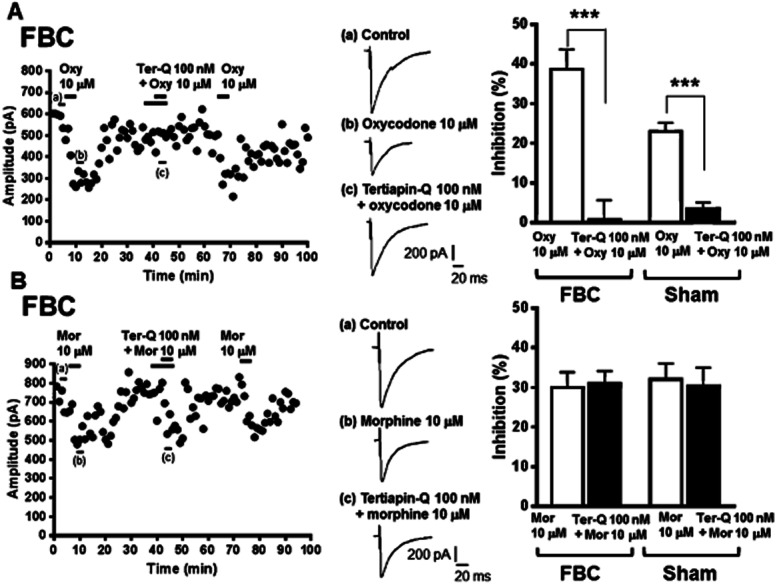Figure 6.

The Kir3.1 channel inhibitor tertiapin-Q abolished the inhibitory effect of oxycodone, but not that of morphine, on GABAergic eIPSCs in VLPAG neurons of the FBC model. (A) Left panel, a representative time course (plot of average amplitude of six IPSCs traces for 1 min) showing that oxycodone caused potent inhibition of GABAergic eIPSCs in a VLPAG neuron from the FBC model, which was abolished by tertiapin-Q. In the middle panel, each trace was recorded during the times indicated on the graph. Right panel, a summary of the effects of tertiapin-Q on the oxycodone-induced reduction of GABAergic eIPSCs in slices from the FBC model and sham-operated mice. Each column represents means ± SEM (n = 5 or 7). The asterisk indicates a statistically significant difference between the oxycodone-only and oxycodone with tertiapin-Q-treated groups, as determined by Student's t-test (two-tailed, ***P < 0.001). (B) Left panel, a representative time course showing that morphine caused inhibition of GABAergic eIPSCs in a VLPAG neuron from the FBC model, which was not abolished by tertiapin-Q. In the middle panel, each trace was recorded during the times indicated on the graph. Right panel, summary of the effects of tertiapin-Q on morphine-induced reduction in GABAergic eIPSCs in slices from the FBC model and sham-operated mice. Each column represents means ± SEM (n = 5 or 6), constituted of the morphine-only and morphine with tertiapin-Q-treated groups.
